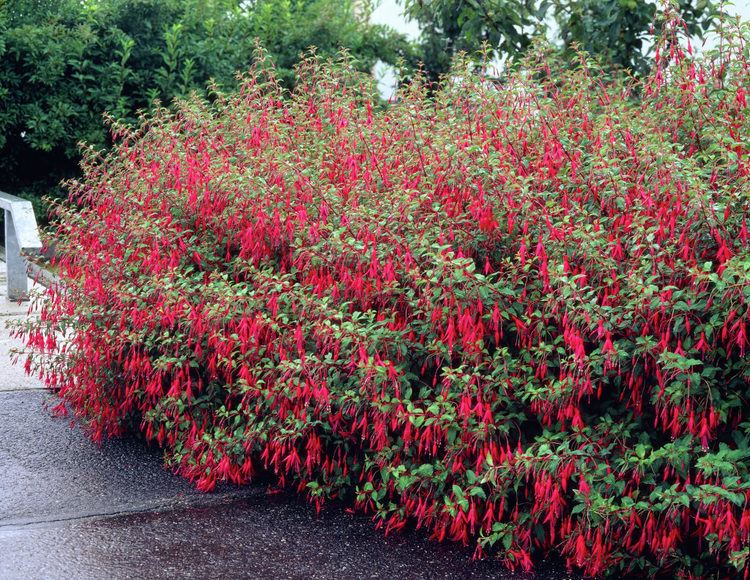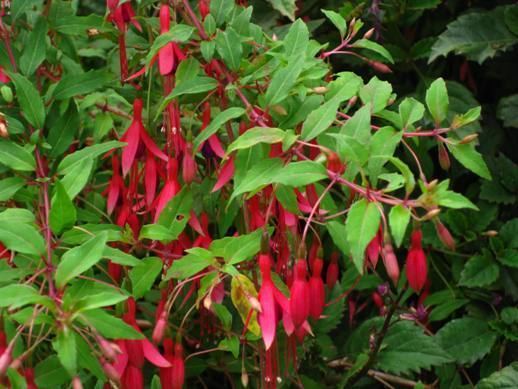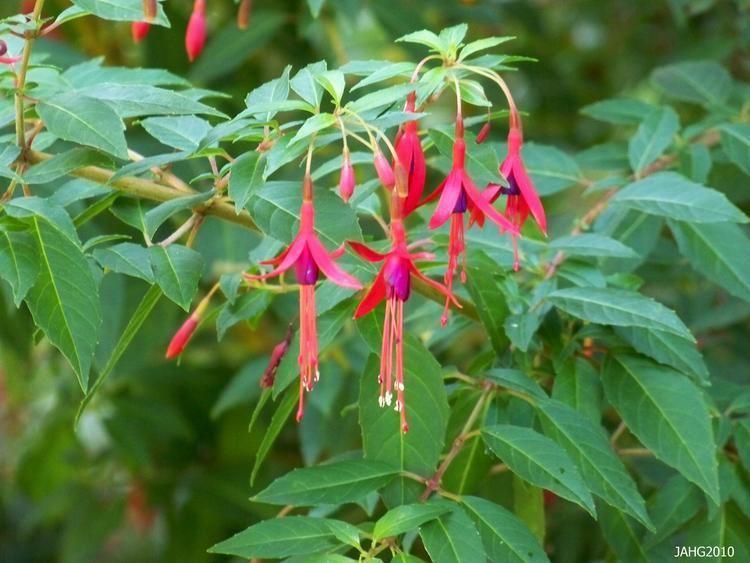Rank Species | Higher classification Fuchsia | |
 | ||
Similar Fuchsia, Onagraceae, Hybrid fuchsia, Fuchsia triphylla, Fuchsia boliviana | ||
Hardy fuchsia fuchsia magellanica
Fuchsia magellanica, commonly known as the hummingbird fuchsia or hardy fuchsia, is a species of flowering plant in the family Evening Primrose family (family Onagraceae), native to the lower Southern Cone of southern South America.
Contents

This species of Fuchsia occurs in temperate climate southern regions of Argentina and Chile, from latitude 32°50' S. to the Straits of Magellan. In Australia, the species is recorded as naturalised in the states of Western Australia, South Australia, New South Wales, Victoria and Tasmania.
Fuchsia magellanica
Description

This sub-shrub can grow to 10 feet (3.0 m) in height and width in frost-free climates, and 4–5 feet (1.2–1.5 m) where colder. The plant blossoms profusely over a long period with many small and tubular pendent flowers, in brilliant shades of red and purple, softer shades of pink and lavender, and some in white. F. magellanica is a consistently variable species across the whole of its natural range and, despite past usage and popular misconceptions, no scientific varieties are currently recognized by botanist Dr. Paul E. Berry, the leading authority on the genus. Care should be taken not to accord any of the many garden selections and hybrids with taxonomic status by using "var." Additionally, pollen stain tests conducted in the Pacific Northwest region of the United States by members of the Western Fuchsia Species Society have indicated that almost all of the many garden selections of this species are, in fact, hybrids to a lesser or greater degree.
Cultivation

Fuchsia magellanica, and its cultivars and hybrids, are widely cultivated by plant nurseries and gardeners as an ornamental plant. It is used for planting in temperate and subtropical gardens and within conservatories, and for containers on patios, balconies, and sunny houseplant positions.
The plants are quite cold-hardy compared to other species from more tropical climates, being deciduous where frosts are light, and only top die back in hard frosts (with mulching). The profuse drooping flowers are a nectar source attractive to hummingbirds.
This species, and hybrids using it as parent stock, are very susceptible to the fuchsia gall mite, Aculops fuchsiae, a serious disfiguring pest that was first accidentally spread from its native Brazil to the West Coast of the United States in 1980. It has more recently made appearances in France (2003), the Channel Islands (2006) and the United Kingdom (2007). Fortunately the fuchsia gall mite doesn't readily survive temperatures under 40°F (5°C) and there are effective treatments and strategies to combat its appearance.
Cultivars
Cultivars of Fuchsia magellanica include:
